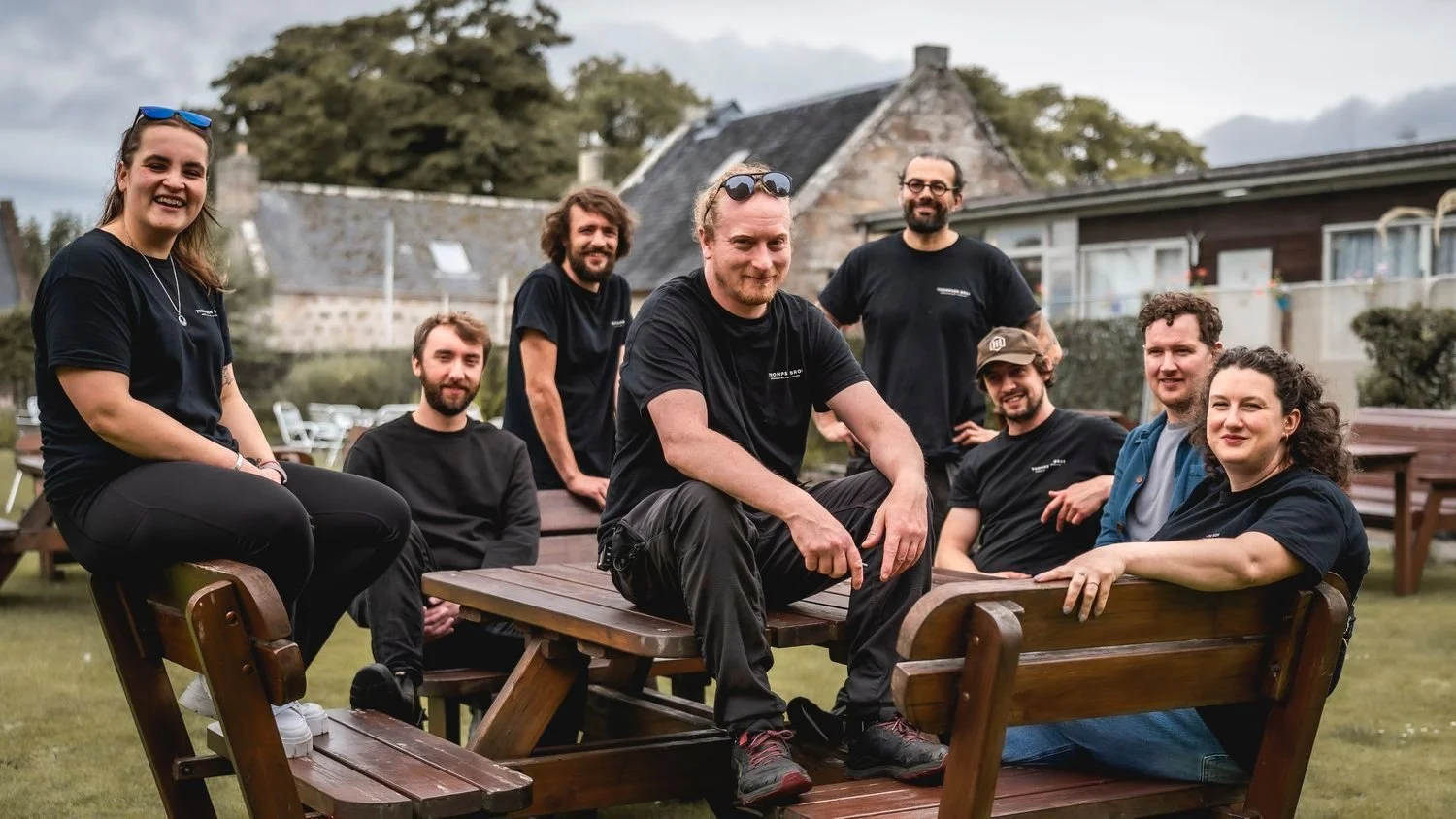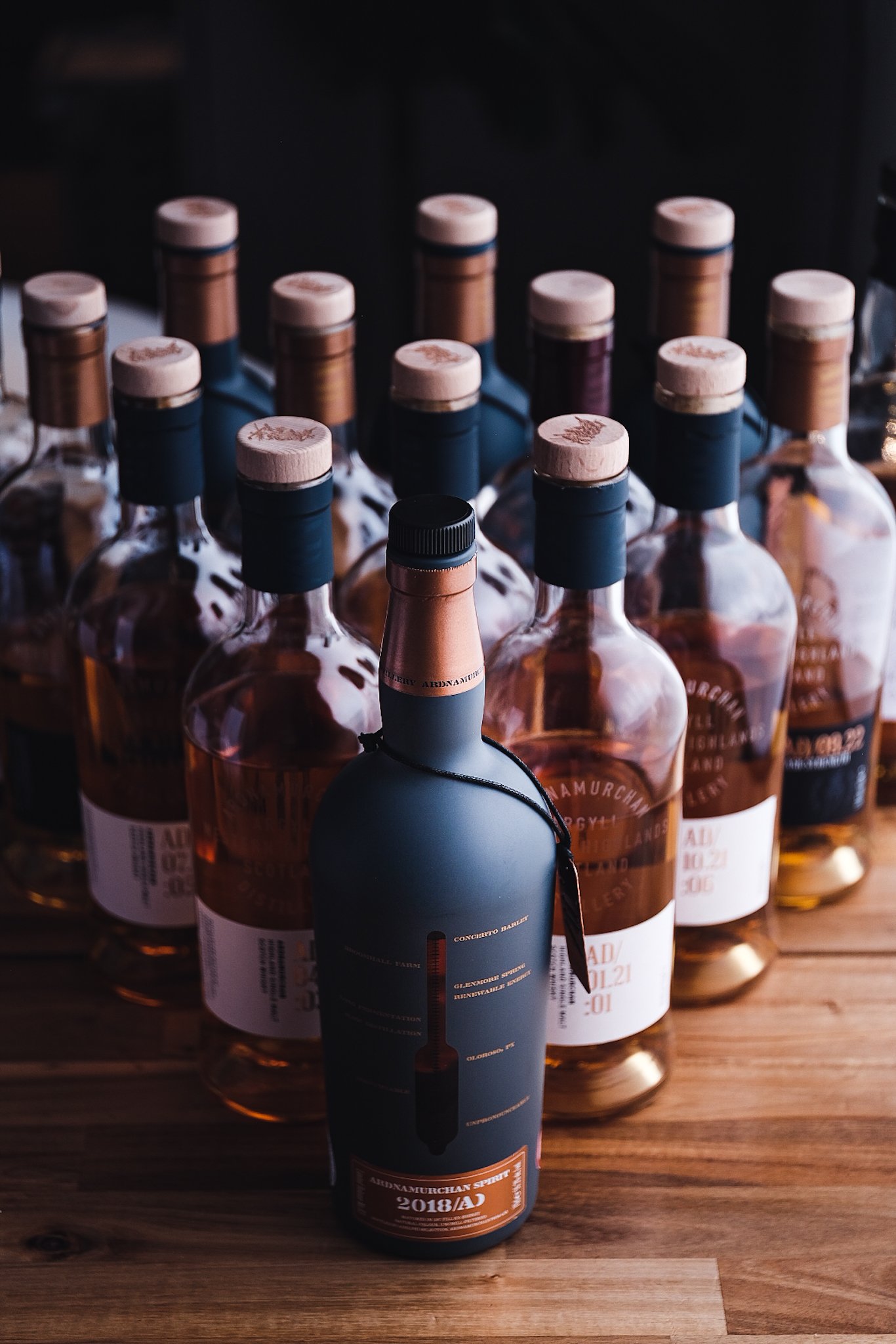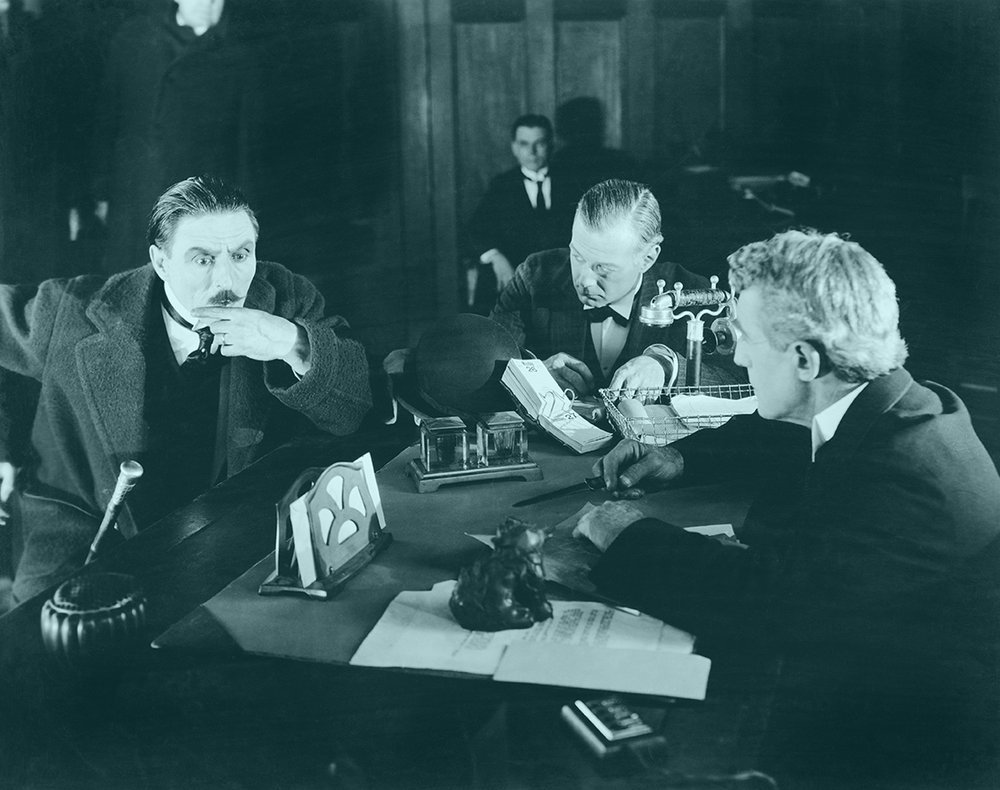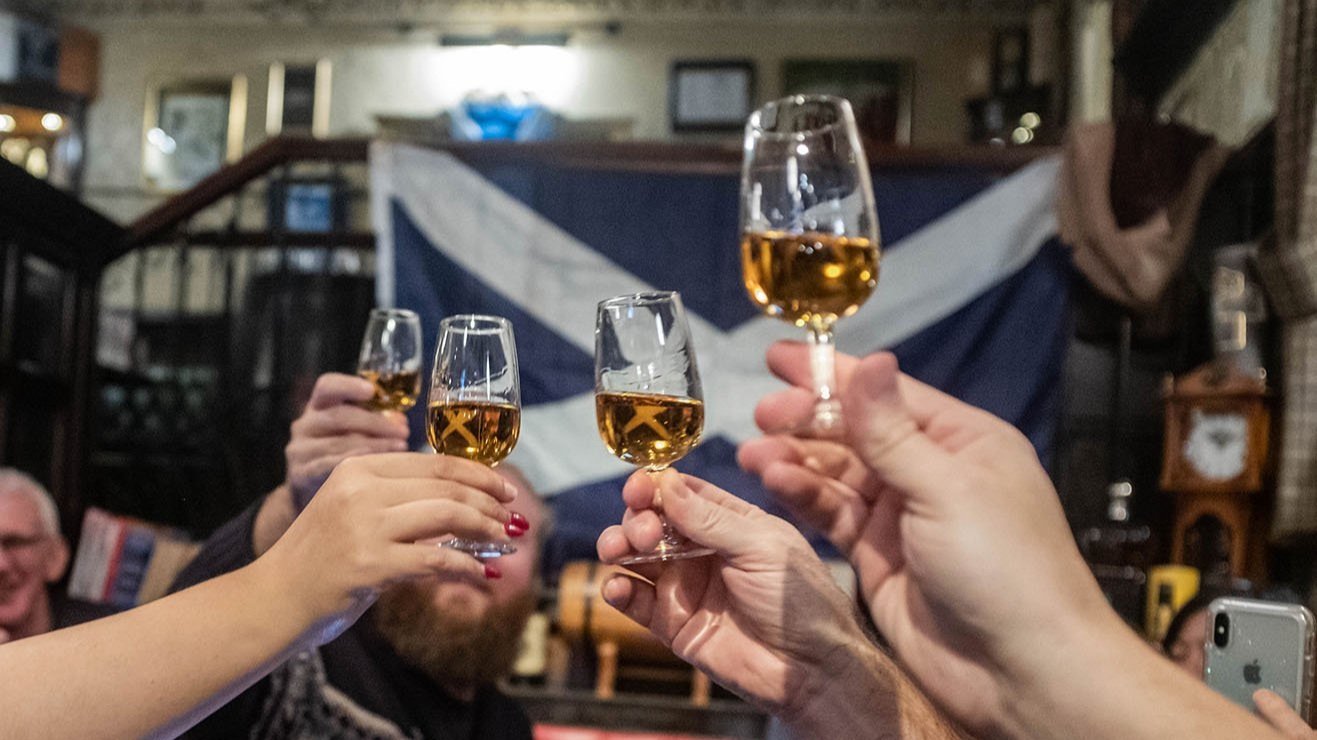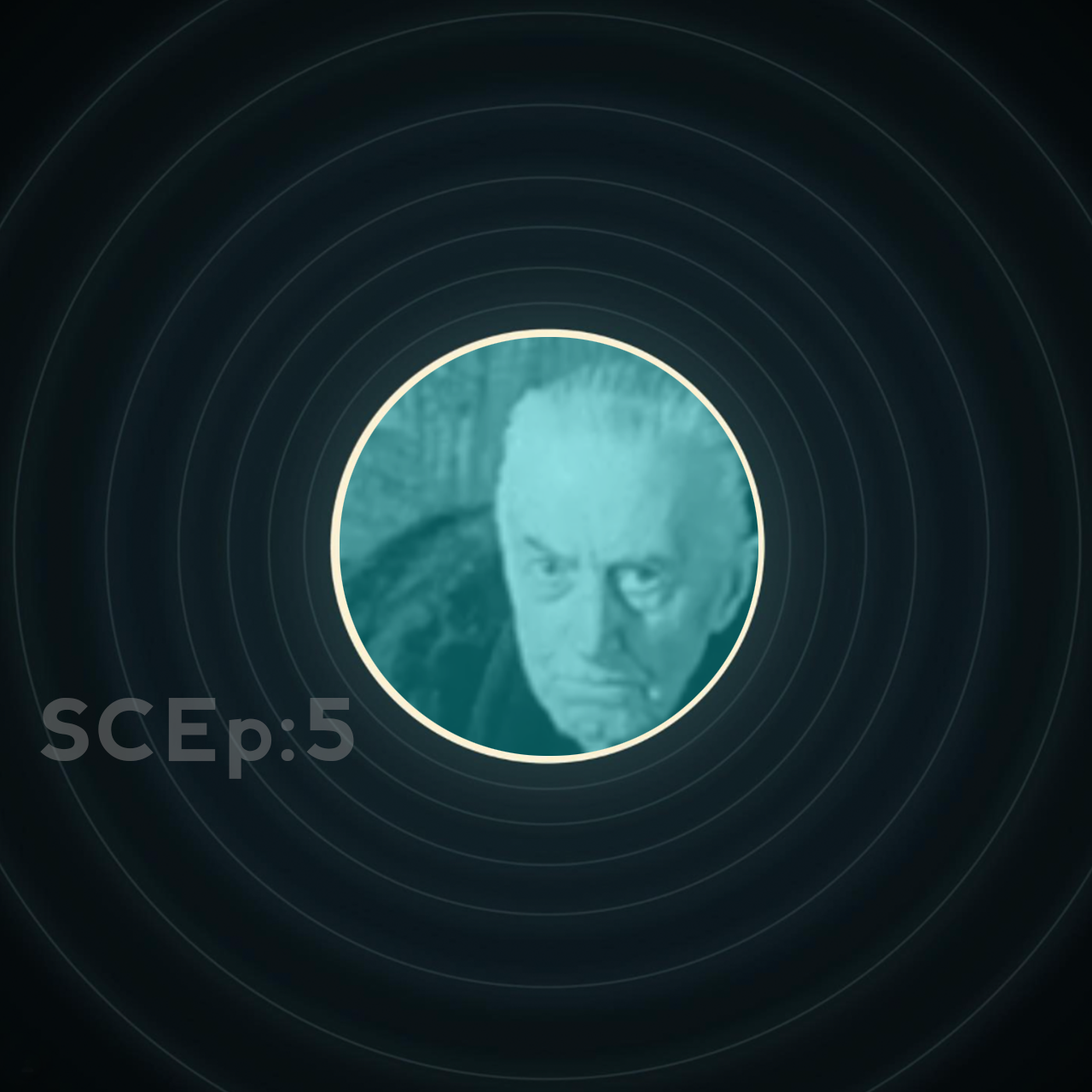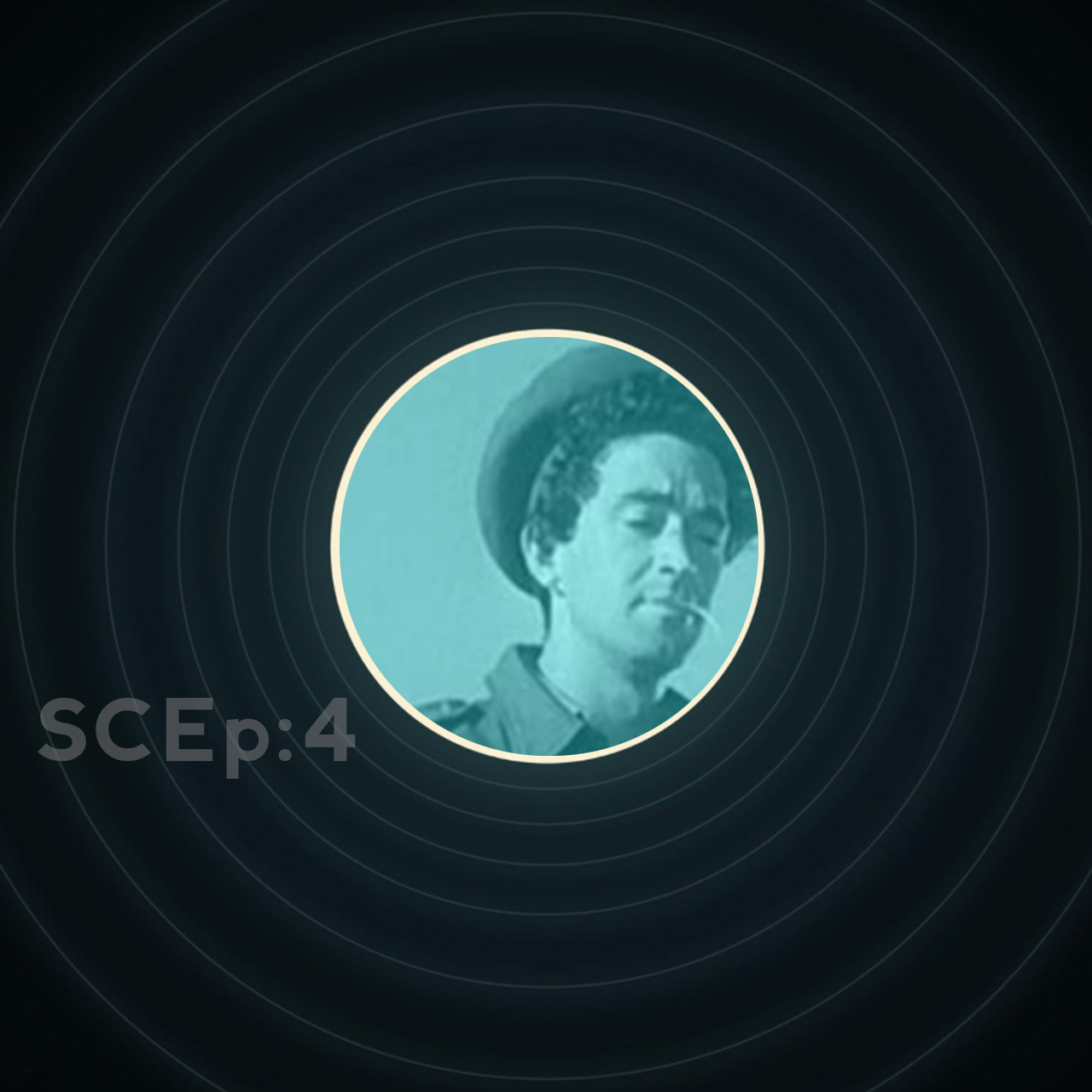What Is Campbeltown ‘Funk’?
There’s something about the whiskies from the Wee Toon
all (whisky) roads lead to Campbeltown.
In the rather plush environs of the Scotch Malt Whisky Society’s Leith Vaults, there’s a large plaque that declares “All roads lead to The Vaults”. Quite fun, but actually I’ve found that, in our whisky journeys, most roads eventually lead to Campbeltown. And it’s a cul-de-sac.
I know there’s little reliability in the concept of regional differences in scotch whisky. You’re just as likely to mistake a peated Speyside for an Islay as you are a sweet and unpeated Islay for a Highland.
However, I’m going to suggest that, for some reason, Campbeltown is different. It has its own very unique draw and, somehow, its own definable style.
It’s probably best to keep the quite remarkable history of this whisky region for another time, but it is worthwhile considering the robustness of the whisky culture in this fairly small town; it simply bounces back, time after time. Whether you consider its Captain Scarlet-like ability to defy death or that incredible and difficult-to-define, unique Campbeltown flavour profile, there’s simply no other whisky producing region quite like it. I’ve been wondering why.
Campbeltown Phoenix
Glengyle distillery revived in 2004 after almost 80 years dormant
First, let’s consider its current whisky production health. There are no extremes of boom and bust that Campbeltown hasn’t reached in its more than two-centuries of legally-producing whisky. At the end of perhaps Scotland’s longest cul-de-sac, it was once home to more than 30 operating distilleries. This is odd because, as its affectionate nickname suggests, the ‘Wee Toon’ retains a relatively compact and remote feel, especially in a modern context. To understand it better, a historical perspective is needed to reveal its convenient shipping links and sheltered harbour, which once made it a connected and vibrant fishing port. When you factor in the local resources granted by the industrious upheaval of the 19th century such as limitless fresh water from a purpose-built reservoir, a plentiful supply of local coal as well as barley from the once active railway, this also made it a particularly attractive spot from which to make and export whisky. It just made sense.
Glen Scotia
Enjoying an incredible renaissance with malt lovers
Around the time it was famously dubbed “Whisky City” by Alfred Barnard in the 19th century, it was home to more than 30 active distilleries at its peak. Yet there are points in the 20th century that found it distilling not a drop of legal whisky - on more than one occasion. We could delve into the reasons for its rise and its downfall as they intertwine interestingly with other dynamics in whisky and politics of the time, but for now we’ll focus on the current situation and the style of whisky made there today. You see, it once more finds itself in a position where the three current distilleries simply cannot meet our relentless thirst for that intense and unique Campbeltown flavour profile. That heady flavour is compelling, and that’s where the focus of this little piece shall lie.
Campbeltown Harbour
Is it a coastal thing?
There exists a thread, perhaps not DNA, but a commonality of aroma and flavour that permeates most of the releases from this peninsula, despite the three very different distilleries.
It’s one that’s difficult to mask with even the most active of casks. It transcends unpeated, lightly peated and heavily peated, and it can be challenging to articulate. It’s often referred to as a ‘funk’. Some may use industrial-inspired tasting notes such as mechanical oils or creosote, maybe vegetal references; mushrooms, wet sacks and mulch. The list goes on but the theme remains. It can sometimes be feinty and weird, but it can often conjure up illusive, flickering complexities. More typically it adds bass notes and an addictive, full and thick richness. It demands attention and is best enjoyed by a curious mind. Some love it at first meeting, others are initially cautious but, if personal experience is anything to go by, all are eventually seduced.
These odd and interesting traits seem to go hand-in-hand with a density of fruit, wood spice and oiliness, but surely it must be possible to determine why? What’s the reason for it? Immediately, at the point of merely nosing one of these whiskies from any of these relatively tiny distilleries, how can so many of us be confident enough to enquire “Campbeltown?”?
And it’s so unique, that there’s a very high likelihood we’ll be correct.
I asked Michael Henry, Master Distiller for Loch Lomond Group (owner of Campbeltown’s Glen Scotia distillery) if he believed this trait existed. “Yes, my view is that there are common traditional practises across the three distilleries that contribute to a Campbeltown character. The practises are shared at two, but not always all three, distilleries. They are; use of floor maltings, specific mash tuns, wooden washbacks and smaller stills. I think these contribute to a thicker mouthfeel or oiliness, a Campbeltown ‘funk’ and overripe fruit note.” Ever more curious, we wanted to dig a little deeper.
Inspired by Michael’s agreement, we asked for more insight from the Campbeltown whisky makers themselves. David Allen is a director at Springbank Distillers & Mitchell’s Glengyle (Kilkerran) Ltd. and Iain McAlister is Glen Scotia’s Master Distiller and Distillery Manager. Both passionate about the region and its whisky, they were happy to discuss this regional ‘DNA’.
Checking specific gravity
Glengyle washbacks; is this ‘funk’ introduced here?
I asked them if they would agree that at least some part of this unique profile, referred to as “Campbeltown funk”, exists in all three currently operating distilleries and, if so, was it intentional or incidental?
Michael suggested “I think there is a shared Campbeltown character that has been shaped by the history of the town and in that way it is incidental.” while Glen Scotia’s Iain added “The flavour profile of Campbeltown as a region has held its characteristics over the last 200 years. If you consider “The Whiskies of Scotland” by RJS McDowell (1967) he states that, ‘Glen Scotia whiskies are heavier, strongly flavoured, somewhat oily’. Similarly, “The Making of Scotch Whisky” by Moss & Hume (1981) indicates that, ‘Campbeltown whiskies are renowned for quality but also are strongly flavoured and give body to a blend’.
“Potentially Glen Scotia whisky is somewhat lighter, perhaps more accessible nowadays, but very importantly still has that robustness and coastal influence associated with Campbeltown and has a wonderful flavour profile; that is, an assemblance of higher alcohol gleaned from the fermentation process and that maritime influence - subtle oils, sodium and occasionally a somewhat dirty appeal, this is what you would historically expect to obtain from the region as a whole. So it can be said that the Campbeltown funk is a combination of both intentional and incidental accident by design. The mashing procedure at two distilleries are very similar rack-and-pinion setups, which will both influence the fermentation procedure - wash alcohol production has a certain regionality associated with it as has the actual distillation process. So the region certainly has held its profile characteristics and nowadays is finding a whole new following, which is wonderful to see, certainly a renaissance in the making for the region.”
David Allen added: “It's hard to define exactly what 'funk' is exactly and I'm sure some reading this may not always recognise it or associate it with our whisky. It is, as you mention, perhaps more of a collective term that encapsulates the wonderful oily, full-bodied, complex and robust whisky we proudly make here in Campbeltown. However, Campbeltown funk does make a better hashtag for social media!”
On the topic of incidental or intentional, David continued: “Using Springbank as our initial reference point, the whisky we make today should be close to what was produced by those from previous generations, which had the same distinctive character shared by many of the town's distilleries. This is, it has been said, why it was favoured by the blenders of the day. You will be aware at Springbank, to the point of obsession, we do not deviate from the methods and processes which those before us have passed down. Therefore I guess we have inherited this 'incidental' Campbeltown trait.”
However, on the subject of Campbeltown's completely rebuilt Glengyle distillery, brought on-stream in 2004, David suggests there’s a different story to tell.
“When we bought the distillery, it was essentially four walls and a roof, devoid of any of the old distilling equipment, leaving us with a blank canvas to create a new Campbeltown whisky,” he said. “For many in the same position, there would have been a temptation to produce a softer, dare I say more marketable whisky than the traditional Campbeltown malts. However, from the earliest stages of development, the vision for Glengyle was that it would remain true to its Campbeltown roots and the whisky produced would carry this robust characteristic so closely associated with our malts, with peated barley being malted on Springbank's malt floors and the second-hand stills from Ben Wyvis being reengineered to produced a heavier spirit.
“In hindsight, it seems daft that Kilkerran would be anything other than it is now, being so successful as it is and admired by today's learned whisky consumers, but back at the turn of the millennium, some may have said that designing a whisky of said character might have been a bit of a risk. Therefore in the case of Glengyle, the trait is certainly an intentional one.”
Traditional methodologies
At Springbank and Kilkerran, if it can be done by hand, it is.
This leads to a somewhat obvious next question; where do they think that flavour comes from?
David considered: “It's probably difficult to pin down exactly. I think it's production related and there is a common theme of Campbeltown whisky generally having some sort of peat influence and produced using similar styles of stills, but I think a lot of people's interpretation of 'funk' is the damp, earthy, bung-cloth note, which of course is a dunnage warehouse characteristic. Not all whisky produced by the three distilleries is matured in this environment however, so a production influence might be the answer.
Iain added: “The flavour profile of Campbeltown, while similar in certain parameters, has marked differences between the three operational distilleries currently in operation, where the profile comes from is, as mentioned, a combination of the mashing procedure, the fermentation hierarchy; yeasts etc and of course these short dumpy stills. It is also a ‘Campbeltown thing’ that is, operationally speaking; the distilleries tend to work in a similar vein and mature a lot of this new make in the burgh.
“This all ties in with the fact these distilleries (although Glengyle is obviously a new setup, but again has followed a typical Campbeltown operational scenario) have changed little, the changes that have been made tended to not interfere with the actual process. This was especially true of Glen Scotia and will encourage encapsulation of that particular style or regionality and profile.”
“Since the downturn in Campbeltown in early 1900’s” Michael adds “which continued through the rest of the century, there was low demand for the spirit produced at the remaining distilleries so the distilleries themselves were not under pressure to modernise or perhaps didn’t have the finances to do so, or increase output.
“The result was that original equipment and processes were retained and this can be seen in the spirit. The use of mash tuns giving cloudier wort, long fermentations often more than 100 hours and slow distillation in relatively smaller stills with low still heights and downward lyne arms all contribute to the shared Campbeltown character.”
I asked how they would describe this ‘funk’.
“I wouldn't describe it as ‘funk’!,” replied David. “Many will disagree with me but as I said, I don't think everyone would recognise this characteristic which seems to have grown in use as an instagram hashtag. Instead, for me, the more common trait is this robust and oily character with its peat and maritime influences.”
For Michael it’s a “full-bodied character, an oiliness and thickness in the texture and an overripe fruit note with great depth on the taste.”
As for Iain, he said: “The ‘funk’, or that Campbeltown DNA, is not a conclusive and definitive flavour profile. Different whiskies, even from Glen Scotia distillery, have different levels and perceived effects. If you consider a lighter variant of the Glen Scotia flavour profile, then first-fill bourbon casks are well placed to lighten and sweeten the maturing new make spirit. But for something that has a greater influence of funk; that dirty heavy appeal and, when demonstrated correctly, it is a wonderful thing, typically a fortified wine cask, either for finishing or first filling.
“Similarly, cask charring can also heighten the regionality and, importantly if a peat thread is present, will undoubtedly demonstrate that robust regionality; Campbeltown DNA or ‘funk’. It should be noted that while it’s possible to manipulate the actual regionality as mentioned to a lesser degree, it should contain a defined flavour profile derived from fermentation initially. One could argue that the regionality of Campbeltown - this ‘DNA’ or ‘funk’ - is something that has been present for a considerable length of time and it is only nowadays that we are aware of it and conscious that it is a plus point and can be managed to the benefit of individual distilleries and their whiskies.”
I asked them about recent announcements and rumours of new plans for distilling in Campbeltown. I wondered if it’s inevitable that we will see more distilling arrive in future and, if so, would they imagine this flavour trait enduring in that spirit too?
“Absolutely!” replied Iain. “It’s the calm before the impending ‘whisky rush’ for Campbeltown. The region is certainly experiencing a renaissance, something that is wonderful to be a part of. Personally, I think the region has been calling out for more distillers and companies to bolster it and I could never understand why it had taken so long.
“Technically there will be different levels of the regionality with each and every distiller, some will undoubtedly choose production regimes due to costs, chosen routes to market etc that will have traces of that funky Campbeltown flavour profile. However the newer the equipment or the adoption of up to date production practises will undoubtedly leave this harder to associate with the region, but I don’t think that is a bad thing, each and every present day Campbeltown distillery has marked differences and that works very well.”
Enthusiastically, David added: “Thankfully, it is very likely we will see at least two new distilleries open up in the region in the next few years. This is great news for whisky lovers and of course Campbeltown. We'll never get back to our heyday of 30-plus distilleries, but a few more wouldn't do any harm. We know and accept distilleries don't necessarily produce whisky in the style of the region where they are situated anymore, but I think there would be an expectation by whisky consumers that any label that carries 'Campbeltown' should be of the character associated with the region.”
Michael agrees: “I think there is every chance the new distilleries will share this character. It will depend on the people building the new distilleries and the choices they make in setting out the style of spirit that the distillery will make. Decisions about how the distillery is constructed and how the plant is run when it is operational will determine the spirit character. With the recognition Campbeltown has with whisky enthusiasts, I think they will look to make a spirit that enthusiasts will want to drink, that is full of character and can be recognised as from Campbeltown.”
David reflected: “I think there's a danger of new whisky becoming too homogenised and trying to fit in with what the industry believes consumers are comfortable with. Plenty of the big guys have this market segment covered so I hope any new Campbeltown distilleries try to showcase their Campbeltown character. Then again, maybe an antithesis to Campbeltown whisky would help it stand out from the local crowd! There's no right or wrong answer, as long as the whisky is good and any new distillery has a positive impact on the local community.”
Inspiring words! Yet as things stand, in 2022, the whiskies currently released form the region do tend to suffer from availability issues, such is the demand. On behalf of the community, especially for those curious to get a taste of this characteristic, I asked which expressions from the region would they recommend trying?
David replied: “For me, our local barley series is some of the best whiskies I've ever tasted and beautifully encapsulates all that is perfect with Campbeltown and Springbank. However, this is very difficult to get a hold of, so I'd nudge people towards Springbank 10 or 15 year old, or Kilkerran 12 year old or 8 year old cask strength, which are all great representations of good Campbeltown whisky, but a bit easier to find on the shelf.”
Adding some, slightly more available (for now!) Glen Scotia options, Iain added: “For the core range, the Victoriana, while not wholly encapsulating that funk aspect, has a robust, heavy, oily profile that has a real depth that ties in with whisky from the mid to late Campbeltown Victorian era. It should be noted that the profile has more flavour driven aspects, but the combination of the rechar and oloroso sherry give a unique balanced dram that has real historic maritime connotations and tie in very nicely with the historical connections that Campbeltown has. Certainly a unique dram and one not to miss.”
Michael offered another fan favourite: “Glen Scotia 15 year old is the best example of Glen Scotia’s distillery character. It is matured in first-fill bourbon with a short oloroso finish so the character retains the distillery influence.”
However, Iain was keen to add: “For something that is a little off-piste, come to the distillery and potentially obtain a bottle of the shop’s single cask bottlings. The forthcoming one is originally a refill American oak, given a long finish in a ruby port cask. It’s non-peated, but has a real full-bodied appeal; robust and, dare I say, a little dirty with real heaviness! But, and this is an important ‘but’, it has the defined Glen Scotia flavour character from the refill aspect, but the fortified ruby has enhanced that depth and heaviness, it has given structure to the oils, sensually enhanced the salinity and ultimately conveys that wonderful, dirty funk, that is loved by so many in a cherished whisky from the region of Campbeltown.”
Another few reasons to take a trip down the west coast and track the flavour source yourself. With the current interest in its malts, you’re unlikely to be lonely in whisky’s favourite cul-de-sac.
Dramface would like to thank Iain McAlister, David Allen and Michael Henry for taking the time to help define the reasons for the enigmatic whiskies from this remote spot at the end of the Kintyre Peninsula.
What do you think the Campbeltown funk is all about and what would you recommend we try to best experience it?
WMc









